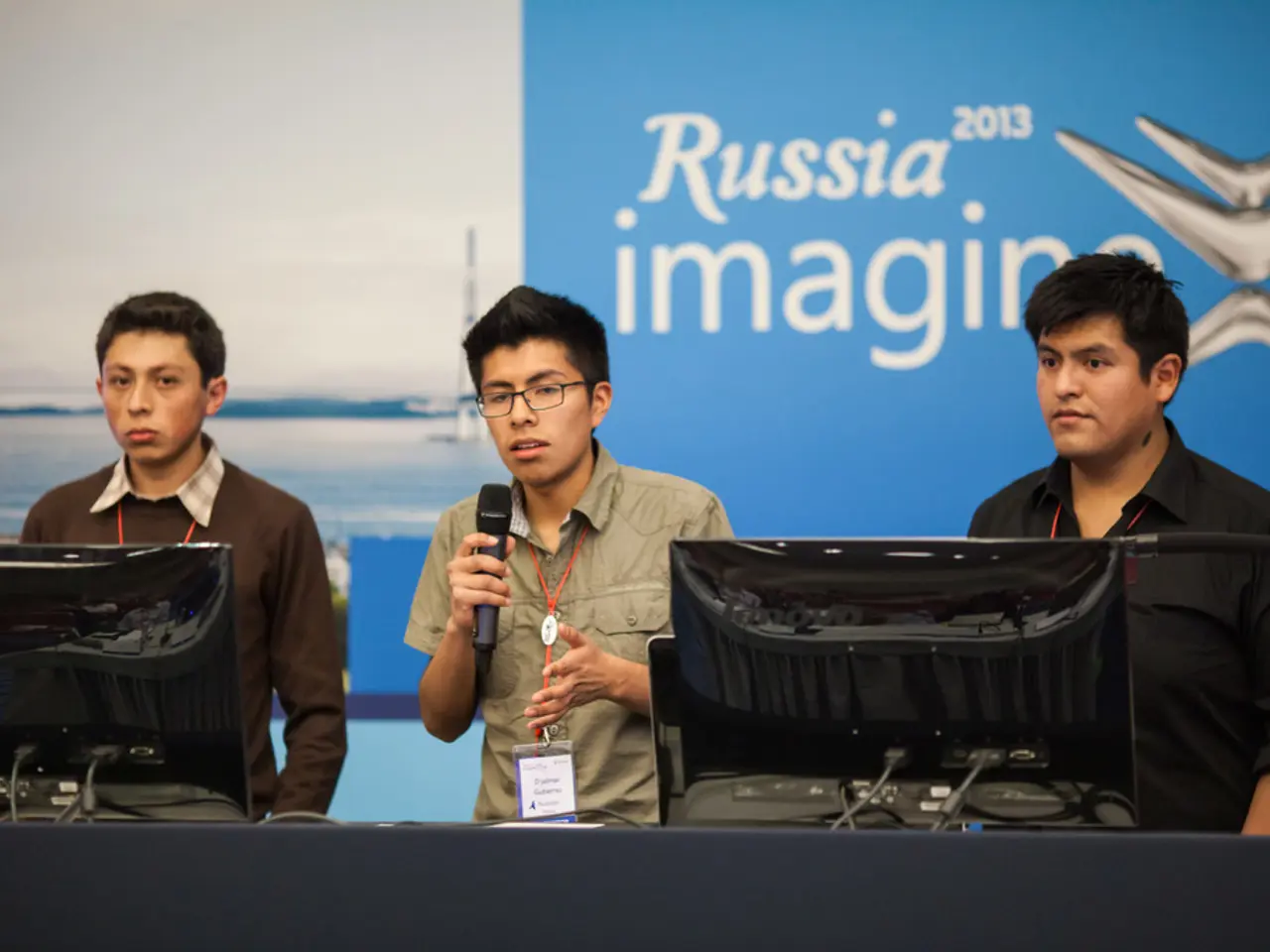Comparing Thought Processes in Divergent and Convergent Thinking through Electroencephalography and Eye Tracking
In a recent study, researchers set out to explore the physiological differences between divergent and convergent thinking using electroencephalography (EEG) and eye tracking. The study, which involved 14 male engineering students, used an adaptation of the Alternative Uses task under two experimental conditions.
The researchers collected brainwaves and ocular activity using EEG and eye tracking during the task. They found that alpha power synchronization, which is linked to top-down inhibition of task-irrelevant cognitive processes during divergent thinking in neuroscientific literature, did not show significant links in their study.
The study also aimed to shed light on the role of active visual-gating during divergent thinking, as suggested by oculometric studies. However, the results did not provide specific findings related to this aspect. Interestingly, oculometric studies suggest a bottom-up process operated by active visual-gating during convergent thinking, not divergent thinking as previously thought.
The study did not reach statistical significance, but it contributes to the growing body of research investigating the role of alpha power synchronization in complex cognitive tasks that require both spontaneous idea generation and deliberate idea evaluation.
The findings align with research describing creativity as involving strong top-down processes that modulate perception and cognition to foster novel idea formation. During divergent thinking, alpha power synchronization reflects internal attention and inhibition of irrelevant external stimuli. Convergent thinking, on the other hand, recruits alpha synchronization alongside executive control networks engaged in organizing and selecting the best solution.
Eye tracking used in conjunction with EEG helps to identify shifts in attention and information processing strategies during creative tasks. Increased activation in frontal areas such as the dorsolateral prefrontal cortex, linked with executive function, during spatially demanding integration tasks suggests that alpha synchronization may facilitate working memory and executive control during convergent thinking.
As the study did not reach statistical significance, future studies should aim to increase comparability among physiological studies by improving the experimental setting and analysis method. They should delve deeper into the influences on results of experimental settings and analysis methods to provide a more comprehensive understanding of the role of alpha power synchronization in divergent and convergent thinking.
In conclusion, while the present study did not provide conclusive findings, it adds to the growing body of research investigating the role of alpha power synchronization, as measured by EEG and modulated alongside eye tracking indices, in the dynamic cognitive processes during both divergent and convergent thinking. Future studies should continue to refine our understanding of these relationships to better understand the complex nature of creativity and problem-solving.
References:
- Beaty, R. E., & Silvia, P. J. (2012). The cognitive neuroscience of creativity: A review. Psychological Bulletin, 138(4), 674–708.
- Silvia, P. J. (2015). The neuroscience of creativity: A review and synthesis. Psychology and Aging, 30(3), 560–577.
- Jaušovec, M., & Jaušovec, A. (1998). Eye movements and creative thinking. Creativity Research Journal, 10(3), 257–263.
- Kounios, J., & Beeman, M. (2009). The neuroscience of insight: A synthesis. Current Directions in Psychological Science, 18(4), 189–194.
- D'Argembeau, A., & Ridderinkhof, K. R. (2011). Executive control and creativity: A dual-process account. Trends in Cognitive Sciences, 15(12), 565–573.
- Future research on eye tracking technology could potentially investigate the role of active visual-gating during medical-conditions related to cognitive processes, such as those affecting divergent and convergent thinking.
- The scientific community continues to explore the use of technology, like eye tracking in combination with EEG, to investigate the neurological mechanisms involved in complex cognitive tasks, such as problem-solving and idea generation, associated with science and medical-conditions.




